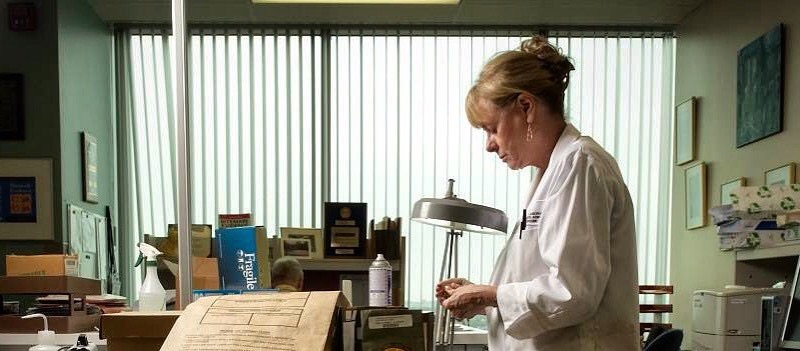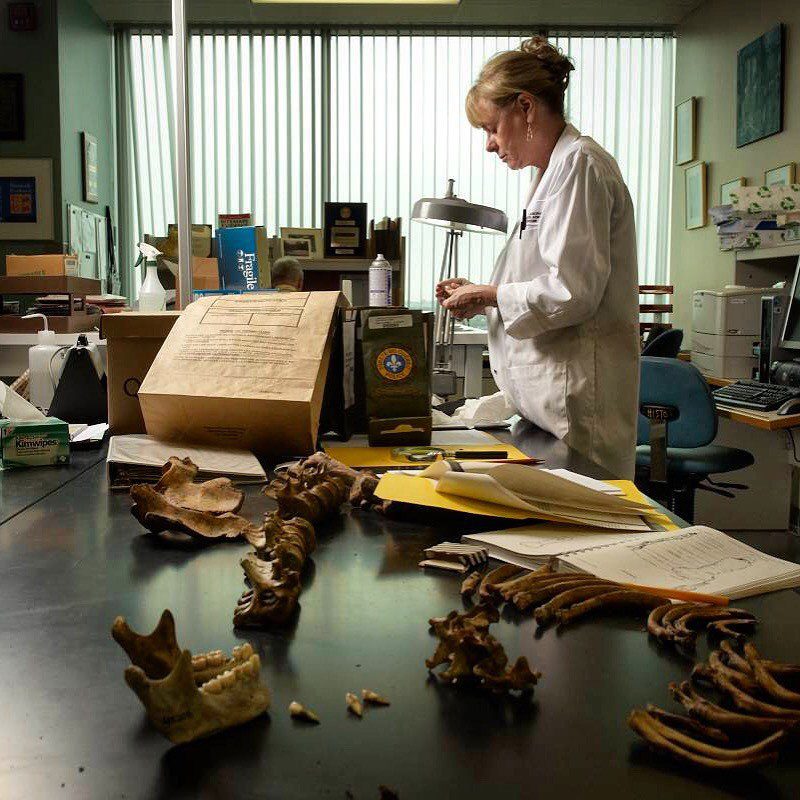
Photo credit: Courtesy of the author
Attention all Forensic Files and Cold Case enthusiasts! Get ready for a new obsession: BONES, now streaming on Fox and multiple outlets. Brace yourselves—once you start, it’s impossible to stop binge-watching!
Inspired by the real-life forensic anthropologist and best-selling novelist Kathy Reichs, BONES is a darkly amusing investigative drama centered on Dr. Temperance Brennan, a forensic anthropologist who writes novels on the side.
“The central premise to both the books and the show is that there’s a huge amount of information in the human skeleton and in cases in which either identity is unknown and we have to figure out who that person is or when the question is cause or manner of death, what happened to that person,” Kathy told Hollywood on the Potomac on the occasion of her latest book Fire and Bones celebrated at an event at The Smithsonian. “What violence? There’s detail in the skeleton and the central premises that you can tease all of that detail out and reconstruct to some extent the life of the person and also the death of the person. What happened to that person?”
In the newest gripping thriller – FIRE AND BONES – forensic anthropologist Temperance Brennan is called to Washington, DC to investigate the remnants of a devastating fire—a job she expects will take her no more than a few days. Instead, the discovery of an unexpected body, one not killed by the blaze, in the hidden sub-basement of the home sends Tempe down a rabbit hole that gets deeper and twistier than she could have ever expected.
We asked Kathy how she ended up in her unique profession.
“As an undergraduate I had multiple majors. I didn’t know what I wanted to focus on, typical for undergraduates. But then once I took a physical anthropology class, a biological anthropology class, I just found that fascinating. I knew I wanted to do that. So I finished undergraduate, applied for graduate school and I did my master’s in PhD in biological anthropology. My PhD was in bio archeology. I was planning on spending my career looking at ancient skeletons, archeologically recovered skeletons, but then police started bringing me cases, and I love archeology, but you’re not going to impact anyone’s life with it. Whereas when you’re doing forensic work and you testify in court or you identify a missing family member, you are going to impact lives. So I really liked the relevance of that. So I retrained and I sat for my boards because forensic anthropologists testify in court, you have to, should be board certified. And then I just never looked back. I just stayed with that aspect of it.”

So is the character in the series you? “Yeah, the character is, well, it’s partly me, partly my character because my character Temperance Brennan and I do the same thing professionally. We work for medical examiners and coroners for the military, for law enforcement, et cetera. But her personal life is very different. So I wanted to create a character that did reflect the aspect of forensic anthropology and working in a medico-legal lab, but also I wanted to wanted her to be an approachable character, so I wanted her to have some flaws. Also, she’s single. She’s younger than I am. I’ve been married for a billion years and I’m a bit older than she is. The books are set in Charlotte, North Carolina and in Montreal, Quebec, which is what I did for decades. I commuted between the two areas doing all the casework for the state and for the province. She’s headquartered at a place called the Jeffersonian in Washington, DC, so that’s different. Also, I think one of the things the character and I have in common is our sense of humor. I try to put humor into the books and we tried very hard to put humor into the show. And that’s tough. You really have to handle that well because every episode and every book is dealing with violent death. So how do you put humor in there and not be offensive? That needs a bit of a delicate touch.”
As to how her profession affected her family? “There were times, because I worked in two countries, I was gone for a while. So that came about when my kids were a bit older. They were in high school or even had finished high school. So it wasn’t like they were little tiny kids and needed a lot of minute by minute monitoring. But I don’t think so. I think the kids understood what I did and appreciated what I did. I don’t think they had any problem with it. I work with the dead, but I work for the living for the families that are still very involved in getting back their family members. I worked for years as a consultant to the Central Identification Lab out in Hawaii for all of our military. We have a commitment to our troops that if we send you overseas, we will find you and we will bring you home. So there’s a huge laboratory that employs the most forensic anthropologists in the country, probably in the world in Honolulu, A huge number was handed over quite a while ago by the Koreans. So getting all of those individuals back to their families , they are very appreciative of that.”
“My new book is called Fire and Bones and it’s out August 6th. And not surprisingly, it starts out with a fire in Washington, DC. This is very timely because this book is set in Washington DC and they know some victims that are in this house, this old house in Foggy Bottom that burned down. So Tempe called to ask to go and help recover and identify those remains. But she finds in a sub cellar of this very old building, another set of remains, and she’s just intrigued by this. It’s a very tiny little woman. And what is that tiny little woman doing, buried in the sub basement of this house in Foggy Bottom? She investigates the history of the house and she finds that in Foggy Bottom, there was a group called the Foggy Bottom Gang back in the thirties into the fifties who were involved in bootlegging and illegal booze distribution and gambling. And so that is also a subplot.”
“I think what initially grabbed me is I stumbled across this book called The Foggy Bottom Gang, and we all know about Al Capone and we know about Chicago, but who thought of the nation’s capital as being the center of one of these rings, which involve Washington, DC and Virginia and Maryland. So I just found that a really interesting historical era and thought my readers might find it interesting too.”
“I love DC. My job as an undergraduate was that I worked on the tour mobiles that used to go around the Tidal Basin. So I had to learn tremendous amount of minutia about the capital.”